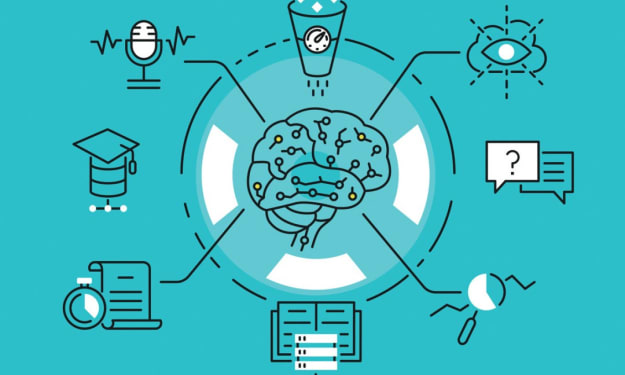
Are repetitive and boring tasks hindering the productivity and delivery of data scientists, engineers, and analysts? You could be sitting on mountains' worth of data you don't even realize you possess! What can you do? Use data analytics and automation as solutions.
Data is at the core of every successful business and an invaluable asset, according to McKinsey and Company report: "Rapid technological advances in digitization and data analytics are rapidly reshaping business landscapes, supercharging performances and opening up new forms of competition."
Automating data analytics can be extremely advantageous to companies. In the past, feedback was limited on business processes and often required waiting until this analysis had been completed before we received feedback on its completion. With analytics automation, however, analysis can occur in real-time with instant feedback as each process unfolds; course corrections can then take place more efficiently for better results and increased profits for any given organization.
Integrating your sales and marketing system, for example, ensures that everyone works from the same data. Teams need direction and confidence from this information in order to act effectively; instead of working in silos where different teams only see partial views of a customer and duplicate efforts, collaboration and support of campaigns are much better ways forward.
What Is Automated Data Analytics?
Automated data analysis refers to the use of computer systems for performing analytical tasks without manual labor. Such processes can bring many advantages for businesses. Analysts no longer need to manually generate reports; an interactive dashboard updates automatically with new updates.
Analytics automation encompasses a range of techniques, from simple scripts to more sophisticated tools that perform exploratory data analysis and model selection.
Automating data analytics to handle big data efficiently is highly efficient. Analytics process automation can be used for tasks like data mining, preparation, replication, and warehouse upkeep - in other words, anything relating to Big Data! Automation tool also gives enterprises access to previously inaccessible information.
Automation of Data Analytics Can Prove Profitable
Automation will increase analytical speed. Data scientists can perform analyses faster when they don't require human input for their work, while computers can complete tasks much more quickly than humans would.
NextBrain's no code ML platforms enable non-technical team members to efficiently take over data analysis. You'll get insights quickly. All it takes is one team member setting up and training the model, and results could appear within minutes!
Data analysts often spend more time than necessary manually processing information; by automating specific tasks, they can focus their energies on other tasks that require their expertise.
Data scientists can now focus on more important tasks instead of collecting and inspecting the quality of original datasets. Computers are better at performing this task than humans and allow data scientists to dedicate more time and energy to important company initiatives. They can now use their time more wisely.
When to Automate Data Analytics?
Automation can enhance data analysis, but how can you decide when and where it would best serve? Automation works best with tasks that follow the rules or need to be repeated regularly.
Automating one study doesn't make much sense; rather, automating data discovery processes for an organization with many data scientists who each deal with different sources would be far more efficient. Automation can help with many analytically demanding tasks, including:
Report generation can be a time-consuming manual process that may take hours or even weeks. By automating it, report creation will become much quicker while at the same time ensuring accurate and comprehensive data collection.
Automating tasks such as cleansing a warehouse can save time and ensure all necessary data is present.
Missed typos, missing values, or mismatched formats may easily slip past us; by automating their discovery and fixing, they ensure data quality.
Examples of Automated Data Analysis.
Abstract concepts can be put into real-world context by providing real-life examples. Automated data analysis has become more essential for businesses as AI and data science become more prominent. We will examine three forms of automated analysis: business intelligence automation (BI), machine learning models (ML), big data automation, and automated data collection.
- Business Intelligence Automation
AI tools and algorithms are used to automate data collection, storage, and analysis. Business intelligence automation enables businesses to gain insight into customer behavior, trends in the market, and other vital business information quickly and easily. Businesses can easily and rapidly analyze large synthetic datasets to spot patterns, correlations, or trends for improved informed decision-making, more efficient processes, or competitive advantages.
Analysts often rely on tools such as Tableau and PowerBI to organize data, yet these do not offer them enough insight to provide deeper understanding. AI algorithms offer another option that can detect anomalies, reveal hidden relationships, as well as forecast future trends.
Anyone familiar with legacy business intelligence (BI) software knows just how time-consuming and costly using it can be, which is why businesses can save both money and time by automating this process.
- Automation and ML Models for Big Data Analysis
No code machine learning can be used not only to automate BI, but also for the analysis of large datasets.
By automating the analysis of large dataset, businesses can make more accurate predictions and derive actionable insights from them. A machine-learning (ML) model can help identify patterns in customer behavior which can then be utilized later to optimize marketing or pricing strategies.
Big data automation provides businesses the way to efficiently query and analyze large datasets.
- Automated data gathering
Automated data gathering uses AI tools and algorithms to collect information from various sources - social media profiles or website logs. Automated data collection enables rapid data collection and analysis for customer insights, market trends or business intelligence purposes.
Automated data collection provides rapid data gathering that is ideal for training machine-learning models or quickly collecting large datasets that will support advanced analytics applications.
NextBrain automates data analysis for your business.
NextBrain is an industry-leading AutoML tool, capable of automating data analyses for virtually every application.
NextBrain emerged victorious from a comparative study among Google AutoML, Microsoft Azure AI, Amazon SageMaker, and Akkio for automating data analysis in terms of speed, cost-efficiency, and ease of use. NextBrain represents an excellent choice for companies seeking data-driven decisions quickly, accurately, and reliably.
NextBrain provides business analysts with an unrivaled experience by embedding an AI model within their platform, which they can utilize to analyze data. Users can input samples and get accurate predictions in real-time - such as using past month's sales figures to forecast next month's sales accurately - making NextBrain an invaluable data-driven decision tool that gives businesses confidence when making data-driven business decisions.
About the Creator
NextBrain
NextBrain AI provides user-friendly machine learning tools that empower businesses to harness the power of AI without coding.






Comments
There are no comments for this story
Be the first to respond and start the conversation.